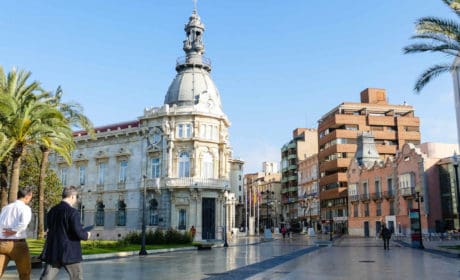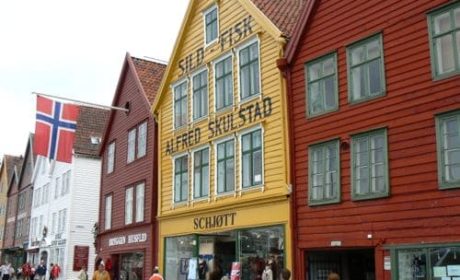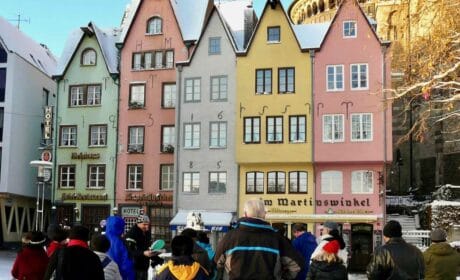In the 1600’s, Christopher Columbus began his second voyage to the New World from the port of Cadiz, Spain. Today, cruise guests learn about the city’s place in history during a Cadiz walking tour shore excursion that celebrates a unique event in Spanish government. Or use these tips to create a sellf-guided walking tour of Cadiz, Spain.
Alan and I enjoyed this cruise excursion as part of a spring Transatlantic crossing. It was a delightful way to explore a new-to-us Spanish city.
Viva la Pepa: Cadiz Walking Tour

When Silver Wind calls on Cadiz, Alan and I join the Viva la Pepa walking tour cruise excursion in Cadiz Old Town. Two guides, dressed in traditional Andalusian fashion, bring Spanish history to life as a couple from 1812, the date the first Spanish constitution was signed in Cadiz.
The couple remains in character throughout the walking tour of Cadiz as they portray Mr. Ramon Power Giralt (a member of Spanish Parliament in 1812) and Lolita Gaditana, flamenco singer.
When Lolita serenades us at several stops, we quickly learn that the famed flamenco is more than just a dance originating in southern Spain. Cante flamenco, or flamenco singing, represents several musical styles or palos. And the art form has received special UNESCO recognition as one of the Masterpieces of the Oral and Intangible Heritage of Humanity.

As the group strolls from pier side to Monumento a la Constitucion de 1812 in Plaza Espana, Alan and I embrace the idea that this is no quickly paced Cadiz walking tour. The experience is intended to be relaxing with plenty of stops for explanations from our historical couple.
Standing in front of the monument, Ramon explains the significance of the 1812 Constitution, the third in the world at that time. And it’s here that Lolita breaks into a welcoming flamenco song.
Exploring the historical streets of Cadiz, Spain
And then our slow stroll winds through the narrow streets of historic Cadiz, which claims to be the oldest continuously inhabited city in the Western world. Phoenician traders founded the Atlantic coast town, known as Gadir, in 1100 BC.
Eventually the Carthaginians took over followed by the Romans and later the Moors. Hannibal lived in Cadiz. And Julius Ceasar first held public office here. Cadiz is old, indeed.

We stop at a building to look up. From the top windows across the way, lookouts once watched for ships arriving with riches from the New World. The gold, silver and other precious commodities made Cadiz Europe’s wealthiest port.
And the 18th century buildings still reflect that grandeur. At an apartment house, we peek through intricately designed wrought iron gates into a courtyard dating to the 1800’s. Ramon points out the original cistern still being used to collect water.

Since our visit coincides with Easter week, some of the churches are closed to prepare for the festivities. Ramon sneaks the group inside Iglesia del Carmen, or Carmen church, where a service was held in 1812 to celebrate the completion of the Constitution.
The group glances quickly at the icons and statues being prepared for the Semana Santa procession before a custodian hurries us outside. It’s a rare look at treasures only seen during this sacred holiday season. Tomorrow, Easter Sunday, the ornate icons will be paraded through the streets of Cadiz in an extravagant procession that lasts for hours.

As the Cadiz walking tour continues, Ramon and Lolita encourage us to become citizens of 1812. Back then, we would have slowly paraded arm in arm along the Alomeda Apodaca, the paved promenade that borders the bay. And so we do.
Our walk eventually brings us to a garden near Plaza de Mina. Here, under the shade of a giant banyon tree, Lolita pauses to sing another faldo.
Boomer Travel Tip
Are you inspired to plan a Spanish adventure? Check out our Spain Travel Planner to get started!
Walking along one of the major streets, Calle Ancha, we notice areas being cordoned off with red ribbons, marking the parade route. Although Spain is a secular country, citizens still honor their religious heritage and culture.
The city population of Cadiz swells during Semana Santa. Stacks of chairs line the sidewalks in anticipation of tomorrow’s procession. Young girls wear white, frilly finery, having just completed their first communion. Shop windows display tempting candy confections and elaborately decorated baked goods.
Admiring Plaza de San Antonio

In Plaza de San Antonio, the group stops to admire the architecture of the large square, especially the Iglesia de San Antonio de Padua (Church of San Antonio). Ramon tells us that in 1812, we would have joined the citizens of Cadiz who stood here listening to the proclamation that Spain now had a constitution. And, of course, this is the reason that the area is also known as Constitution Square.

The tour includes a ticket for going inside Iglesia de San Antonio de Padua. Looking at the elaborate carvings and intricate silver pieces proves to be a nice way to cool off on a warm day. Of special note is the main altar—wood painted to look like marble—by Manuel Garcia de Álamo.
As so often happens these days during shore excursion walking tours, some guests become impatient to leave the group. If only they would tell the guide. After sorting out the change to the guest number count, Ramon and Lolita continue the tour.
If you leave an organized tour, remember to be respectful enough to inform the guide so that the group doesn’t wait or go looking for you.
By now, the streets are filling up with Saturday shoppers and tourists. When the tour stops in front of Cadiz Cathedral, Ramon and Lolita offer suggestions to guests who want to stay in the city center before escorting the rest of us to the pier.
Alan and I walk back to the ship impressed with the undiscovered feel of this Spanish port and the songs of flamenco ringing in our ears.
Are you cruising in Spain? Check out our reviews of Spain shore excursions before making your plans.
Save to Pinterest




